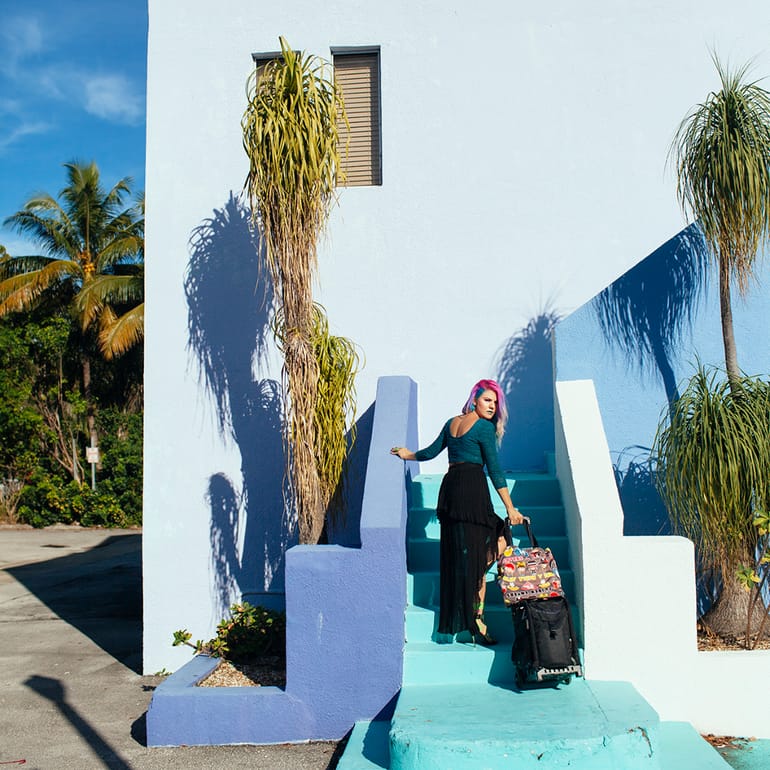As I settle into a new chapter with school, I wanted to take some time to reflect on some of my favorite projects from my 15 years in Silicon Valley.
One of my favorite projects came to me in 2013. At that time, I had just left a startup where I’d been leading communications and had announced my plans to go freelance as a creative in Silicon Valley. Shortly after that, I received a call from a friend and Uber shareholder, offering me a three-month gig to lead a brand and positioning sprint for Uber. The next day, I found myself in a meeting with Travis Kalanick, pitching why I was the right person for the job. By the end of that day, I was hired.
One of the projects I had the opportunity to create during this time was "Miami Needs Uber."
Uber was not yet legal in Miami in 2013, and one local councilman was standing in the way despite overwhelming support from the community, other government members, drivers, and riders. A couple of months into my time at Uber, Travis Kalanick pulled me aside with a challenge: come up with a campaign to help Uber become legal in Miami. Oh—and I had a week to make it happen.
My background is in communications, and I’ve always believed that the most powerful messaging comes from real people. For this project, I didn’t want the campaign to come from Uber’s corporate voice—it had to be community-driven. I also knew that I had a vast community of supporters that I could potentially work with. So, I got to work planning a large-scale interview campaign featuring Miami residents willing to share how Uber could positively impact their lives and community.
I asked the Uber comms team to help support me with this campaign. With their help, I secured 60 interview participants, ranging from celebrities to politicians, artists to drivers, all influential in their communities. I planned to interview and photograph 20 of them myself, and I hired two additional “Instagram-famous” photographers to capture the rest. At the time, Instagram was just beginning to rise, and we were among the first tech companies to utilize a social influencer strategy to give us massive reach. We wanted this to be talked about far beyond Miami.

By the following week, our team was in Miami. Each day was spent going from one end of the city to the other, capturing people’s stories in their homes and workplaces. At night, we edited and prepped the content for distribution.
The campaign’s content was shared daily to our influencers’ followings and archived on a custom website that the Uber engineering team kindly built for us. With the help of my design team, this became a massive multimedia project, with billboards, hand-painted murals, airplane fliers, truck skins, newspaper ads, and even branded coconuts distributed on Miami’s beaches. Everything was designed to draw people into the conversation.

The campaign took over Instagram, generating over 120,000 likes and 1,200 comments from spectators all over the world. It reached millions, and public pressure on government officials began to mount.
Public awareness and support for Uber in Miami grew, and eventually, the company was legalized in the city.

I know most of you reading don't have Uber's budget and resources. But here are a few takeaways from this campaign that you can utilize, no matter your size:
- Let others do the talking for you. One of the golden rules of public relations is that the most effective communication often comes from third parties. If Uber had simply pushed a corporate narrative, it wouldn’t have resonated the same way. By collecting real stories from the community, we showcased a movement through authentic, relatable storytelling. This approach works for any business—engage your community, gather real stories, and let them highlight your value.
- It's okay to be polarizing. Not everyone wanted Uber to be legal in Miami. We knew that going into it. You cannot create viral work and also want everyone to like it. This campaign was designed to reach as many people as possible, and ultimately let them speak on our behalf, knowing there would be naysayers in the mix.
- People can be your greatest resource on a budget. For me, the most valuable resource on this project were the teams I had available to me. It would have been impossible to pull this off without the Uber comms team reaching out to community members, booking interviews and coordinating logistics, as well as my design team managing the other creative elements on the campaign. Across my career, I have often utilized internal teams at tech companies to help support my projects, allowing us to do more with budgets. I would strongly encourage this in your own projects.
That’s all for this week. Thanks for reading.
H

